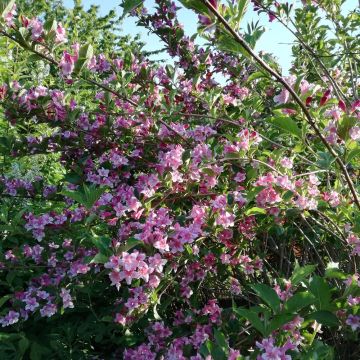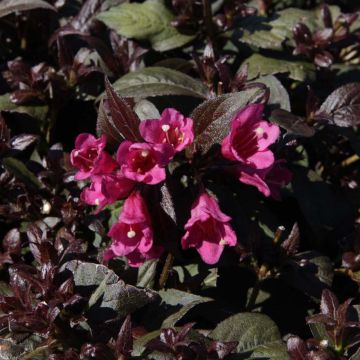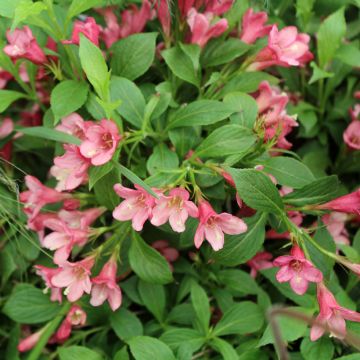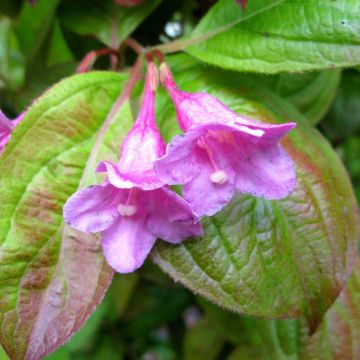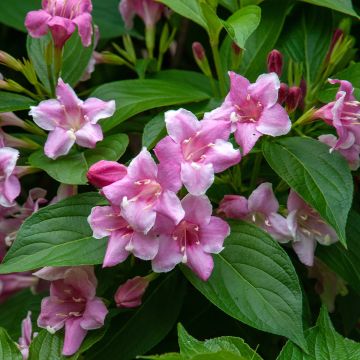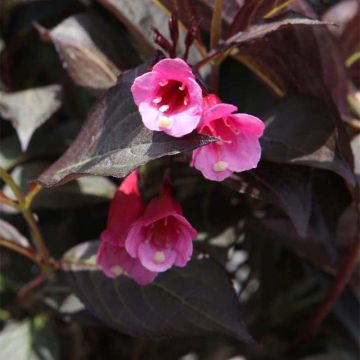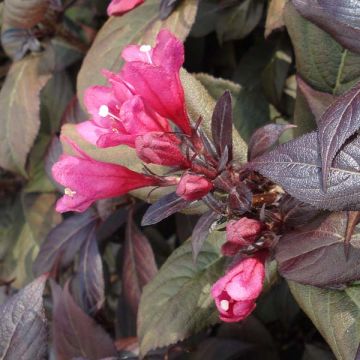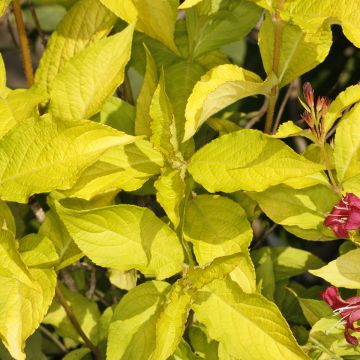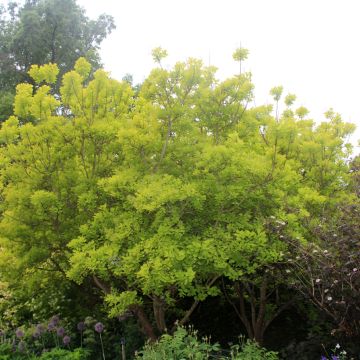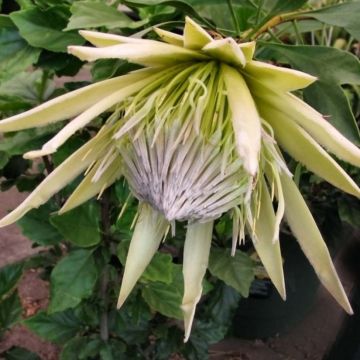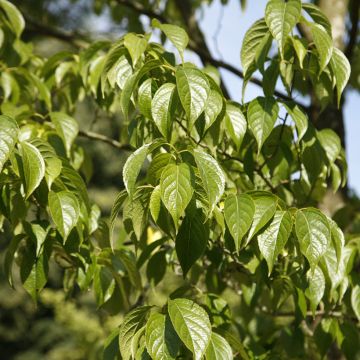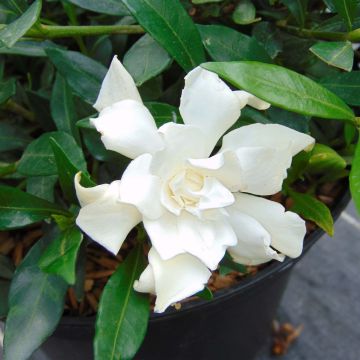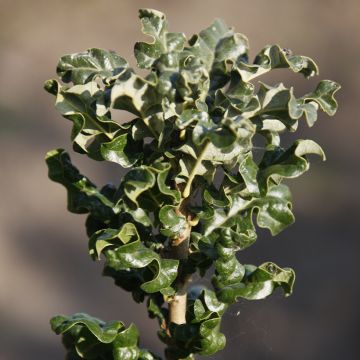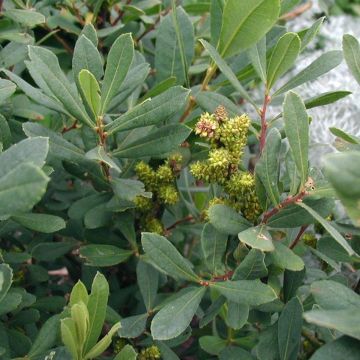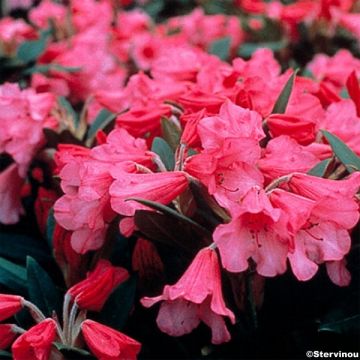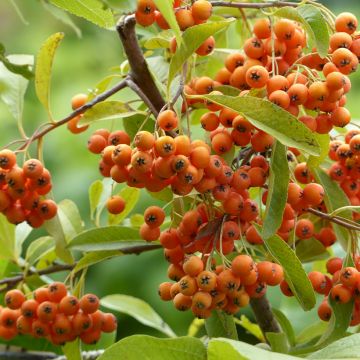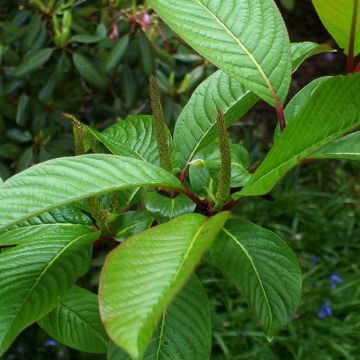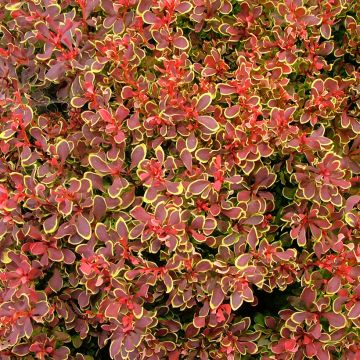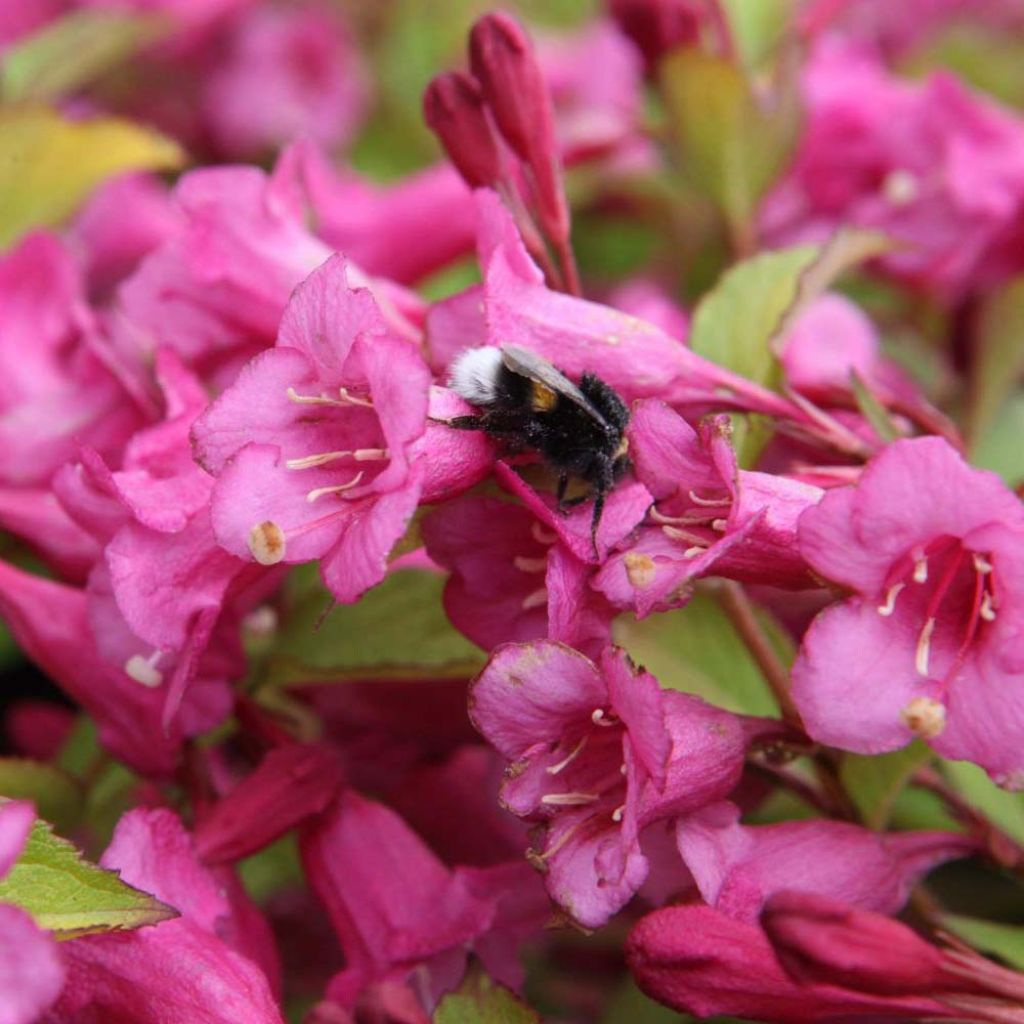

Weigela florida Princess Ayla
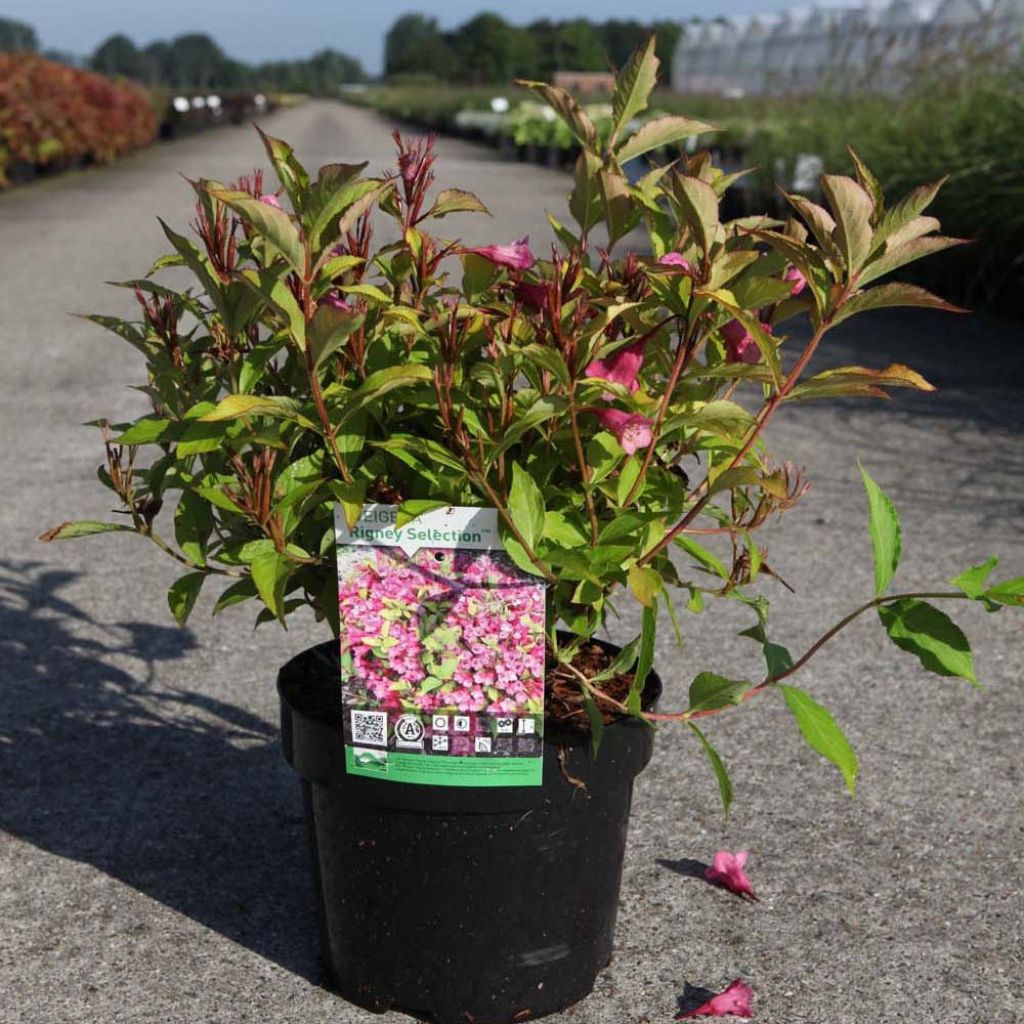

Weigela florida Princess Ayla
Weigela florida Princess Ayla
Weigela florida Princess Ayla®
Old-fashioned Weigela
This item cannot be shipped to the selected country
Delivery charge from €5.90
Delivery charge from €5.90
More information
Schedule delivery date,
and select date in basket
This plant carries a 24 months recovery warranty
More information
We guarantee the quality of our plants for a full growing cycle, and will replace at our expense any plant that fails to recover under normal climatic and planting conditions.
From €5.90 for pickup delivery and €6.90 for home delivery
Express home delivery from €8.90.
From €5.90 for pickup delivery and €6.90 for home delivery
Express home delivery from €8.90.
Does this plant fit my garden?
Set up your Plantfit profile →
Description
Weigela florida Princess Ayla is a compact new variety with beautifully coloured foliage that is sun-resistant and has generous flowering. Its young leaves are a very bright lime-yellow and turn light green tinged with purple, creating a superb colour combination well into the season. Its flowering is both abundant and delightful, with tubular flowers in a lovely fresh pink that fade to white-pink. This festive shrub will bring a lot of cheer to a rustic or romantic flower bed and will liven up the terrace or balcony for a good part of the year.
Native to northern China, Japan, and Korea, Weigela florida is a deciduous shrub belonging to the Caprifoliaceae family. This calcicolous shrub (preferring limestone soils) has a fibrous and trailing root system, which is perfectly suited for transplantation. The 'Princess Ayla' cultivar was recently selected in the United Kingdom by Ken Rigney. The shrub has an erect, rounded, and dense habit, and forms a ramified bush that will not exceed an average of 1.25 m (4 ft). Its foliage changes colour throughout the seasons, but remains attractive from spring to autumn and does not burn in the sun. It is composed of sessile leaves, meaning without petioles and directly attached to the branches, pubescent on the underside, and of an oval to elliptical shape. Their colour ranges from bright yellow-green to light green with a purple-brown tint. Its funnel-shaped flowers have an intermediate colour between pink and violet, similar to that of the wild species. They are borne in corymbs, at the ends of the previous year's and current year's branches, and bloom abundantly from May to June. Summer flowering is more sporadic and irregular, depending on the climate. It is also highly attractive to bees and nectar-loving insects.
Hardy down to -20 °C (-4 °F), the 'Princess Ayla' Weigelia will thrive in many regions, in sunny or semi-shady locations, in ordinary soil, remaining moist but well-drained. This variety, as attractive for its foliage as for its small size, brings a lot of whimsy to the garden as well as to the terrace. In a flower bed, for example, give it companions such as Physocarpus, pheasant trees (Leycesteria formosa), ornamental brambles, a small viburnum chosen for its autumn colours (Viburnum 'Bailey Compact'), or a Purple Dwarf Barberry. In the background, the very dark foliage of holly, mahonia, or yew will form a dark setting for its colourful foliage and provide winter decoration.
Report an error about the product description
Weigela florida Princess Ayla in pictures
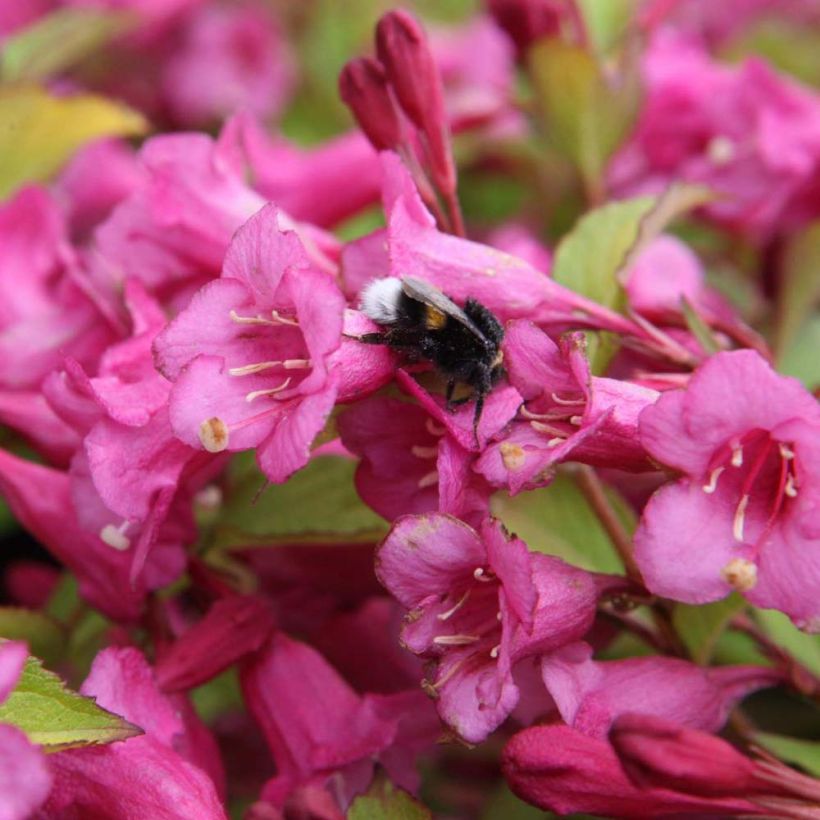

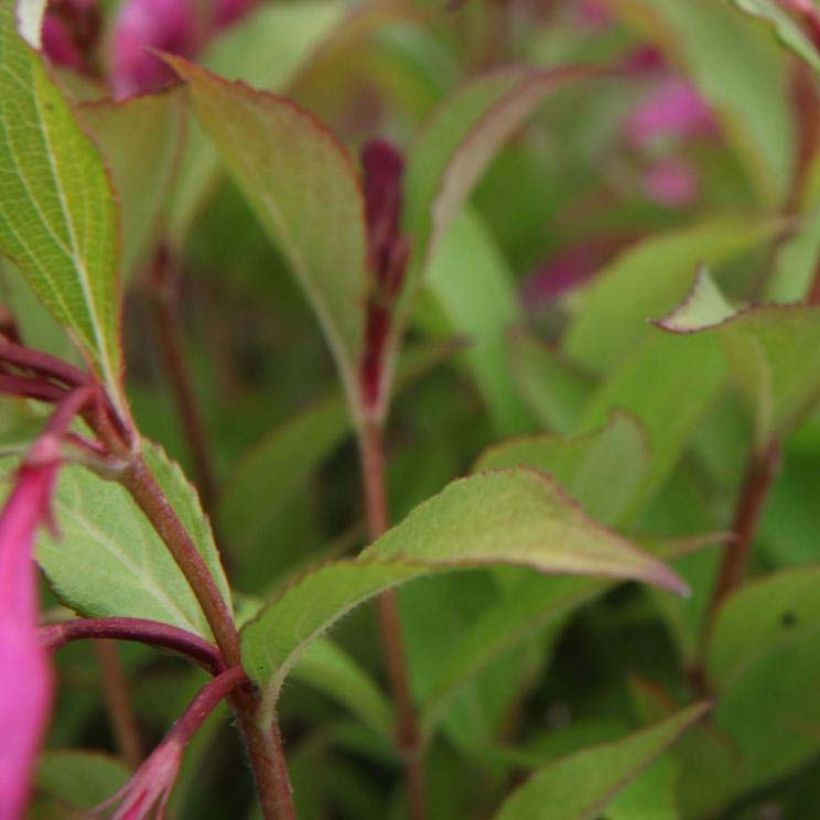

Plant habit
Flowering
Foliage
Botanical data
Weigela
florida
Princess Ayla®
Caprifoliaceae
Old-fashioned Weigela
Cultivar or hybrid
Other Weigela
Planting and care
Hardy down to -20 °C (-4 °F), Weigela florida Princess Ayla thrives in sunny or semi-shaded positions. Its variegated foliage withstands sunny exposures, which also promote flower production. Plant it in ordinary, well-drained soil that remains moist in summer, with a neutral to slightly alkaline pH, from October to March (excluding the frost period). To maintain a compact habit and encourage flowering, shorten the branches that have borne spring flowers by 2/3, just after flowering. Weigela is a shrub that is easy to grow, but it does not like drought or salt spray.
Planting period
Intended location
Care
This item has not been reviewed yet - be the first to leave a review about it.
Spring-flowering shrubs
Haven't found what you were looking for?
Hardiness is the lowest winter temperature a plant can endure without suffering serious damage or even dying. However, hardiness is affected by location (a sheltered area, such as a patio), protection (winter cover) and soil type (hardiness is improved by well-drained soil).

Photo Sharing Terms & Conditions
In order to encourage gardeners to interact and share their experiences, Promesse de fleurs offers various media enabling content to be uploaded onto its Site - in particular via the ‘Photo sharing’ module.
The User agrees to refrain from:
- Posting any content that is illegal, prejudicial, insulting, racist, inciteful to hatred, revisionist, contrary to public decency, that infringes on privacy or on the privacy rights of third parties, in particular the publicity rights of persons and goods, intellectual property rights, or the right to privacy.
- Submitting content on behalf of a third party;
- Impersonate the identity of a third party and/or publish any personal information about a third party;
In general, the User undertakes to refrain from any unethical behaviour.
All Content (in particular text, comments, files, images, photos, videos, creative works, etc.), which may be subject to property or intellectual property rights, image or other private rights, shall remain the property of the User, subject to the limited rights granted by the terms of the licence granted by Promesse de fleurs as stated below. Users are at liberty to publish or not to publish such Content on the Site, notably via the ‘Photo Sharing’ facility, and accept that this Content shall be made public and freely accessible, notably on the Internet.
Users further acknowledge, undertake to have ,and guarantee that they hold all necessary rights and permissions to publish such material on the Site, in particular with regard to the legislation in force pertaining to any privacy, property, intellectual property, image, or contractual rights, or rights of any other nature. By publishing such Content on the Site, Users acknowledge accepting full liability as publishers of the Content within the meaning of the law, and grant Promesse de fleurs, free of charge, an inclusive, worldwide licence for the said Content for the entire duration of its publication, including all reproduction, representation, up/downloading, displaying, performing, transmission, and storage rights.
Users also grant permission for their name to be linked to the Content and accept that this link may not always be made available.
By engaging in posting material, Users consent to their Content becoming automatically accessible on the Internet, in particular on other sites and/or blogs and/or web pages of the Promesse de fleurs site, including in particular social pages and the Promesse de fleurs catalogue.
Users may secure the removal of entrusted content free of charge by issuing a simple request via our contact form.
The flowering period indicated on our website applies to countries and regions located in USDA zone 8 (France, the United Kingdom, Ireland, the Netherlands, etc.)
It will vary according to where you live:
- In zones 9 to 10 (Italy, Spain, Greece, etc.), flowering will occur about 2 to 4 weeks earlier.
- In zones 6 to 7 (Germany, Poland, Slovenia, and lower mountainous regions), flowering will be delayed by 2 to 3 weeks.
- In zone 5 (Central Europe, Scandinavia), blooming will be delayed by 3 to 5 weeks.
In temperate climates, pruning of spring-flowering shrubs (forsythia, spireas, etc.) should be done just after flowering.
Pruning of summer-flowering shrubs (Indian Lilac, Perovskia, etc.) can be done in winter or spring.
In cold regions as well as with frost-sensitive plants, avoid pruning too early when severe frosts may still occur.
The planting period indicated on our website applies to countries and regions located in USDA zone 8 (France, United Kingdom, Ireland, Netherlands).
It will vary according to where you live:
- In Mediterranean zones (Marseille, Madrid, Milan, etc.), autumn and winter are the best planting periods.
- In continental zones (Strasbourg, Munich, Vienna, etc.), delay planting by 2 to 3 weeks in spring and bring it forward by 2 to 4 weeks in autumn.
- In mountainous regions (the Alps, Pyrenees, Carpathians, etc.), it is best to plant in late spring (May-June) or late summer (August-September).
The harvesting period indicated on our website applies to countries and regions in USDA zone 8 (France, England, Ireland, the Netherlands).
In colder areas (Scandinavia, Poland, Austria...) fruit and vegetable harvests are likely to be delayed by 3-4 weeks.
In warmer areas (Italy, Spain, Greece, etc.), harvesting will probably take place earlier, depending on weather conditions.
The sowing periods indicated on our website apply to countries and regions within USDA Zone 8 (France, UK, Ireland, Netherlands).
In colder areas (Scandinavia, Poland, Austria...), delay any outdoor sowing by 3-4 weeks, or sow under glass.
In warmer climes (Italy, Spain, Greece, etc.), bring outdoor sowing forward by a few weeks.

































